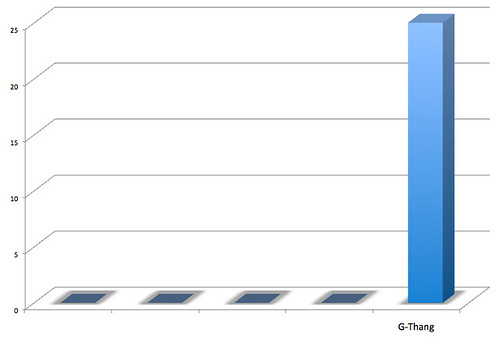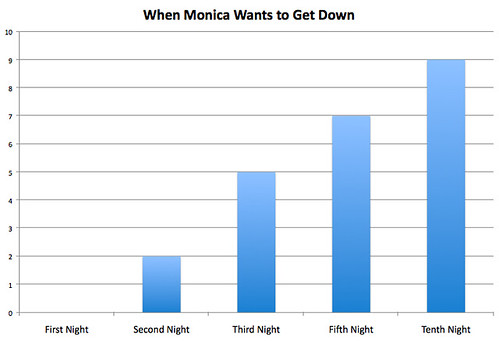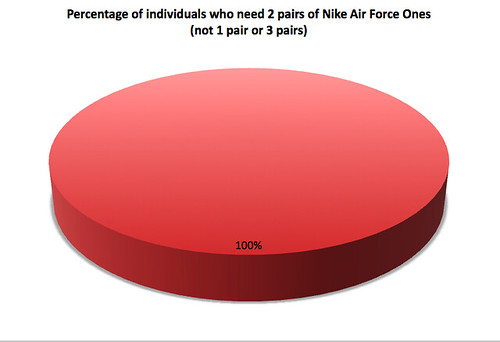Monday, March 03, 2008
MS Excel/Word + Hip Hop (Part Dalawa)
Saturday, March 01, 2008
MS Excel + Hip Hop







I'm sure I got more where these came from.
Friday, November 23, 2007
CONSCIOUS HIP HOP (for free)!

For all you cd-burning-free-downloading-that-cd-ain't-worth-my-10-dollars-folks, it's not your last chance to own Dual Consciousness. Although there won't be any reprints anytime soon, the iLL-Literacy team have been working on getting the album to all major digital distribution retailers (iTunes, Rhapsody, SNOCAP, etc.). Since it will take some time before you will be able to download it from these sites, we decided that we couldn't leave you all without anyway to download it if you so pleased. Therefore, the iLL-Literacy team has decided to make the album availableGet in on these updates! I'm a big iLL-Literacy fan, thus I am a fan of Dahlak. I should have added this album to my favorite albums list. =)
for FREE download from Black Friday (Nov. 23rd) until January 1st! Please spread the word to friends, family, and anyone who might be interested in downloading some good music for no price and no hassle. Just go to WWW.THISISDAHLAK.COM and download Dual Consciousness onto your personal computer. Thank you so much for supporting the music. Stay tuned. I will try to stay worthy of your
love and support…
Sincerely,
Dahlak
Labels: hip hop
Friday, July 06, 2007
Get Up, I Get Down
I actually have a lot of blog topics already done, but haven't been able to post them up. Traveling is hella crazy... and prevents me from blogging. Don't worry though, absence makes the heart grow fonder. =)
Hip Hop & Spoken Word (as demonstrated by Kanye West & J. Ivy)... another topic I will further research and report back. Seeking inspiration and stumbling upon wisdom, I found this. Enjoy.
x_magsalita.
Labels: hip hop, spoken word
Thursday, June 14, 2007
Run this.
"She has survived the hard life. But the story of her oppression and her resistance is not on the screen.” - Norman K. Denzin
Running away is not the answer. Neither is making money off of real womens' painful memories and experiences.
(I was reminded of this short essay I wrote when a friend referenced this video & Ludacris at an Open Mic Nite.)
In the video, Ludacris and MJB attempt to shed light on issues of runaway youth. This music video promotes social consciousness and awareness about sexual violence, rape, suicide, poverty, women’s issues, homelessness, abuse, drugs and alcohol. At the same time, the music video produces images of helpless females in dire need of a present but absent authority figure. The authority figure is present because they are shown in the video, yet they are also absent because of the manner in which Ludacris describes their lack of involvement in their children’s lives. The three girls, with three different stories, are described by what is deemed as strife caused by an absence of a loved one.
The images shown are problematic in conjunction with the lyrics. Ludacris is speaking from a male’s perspective and reduces the lives of these women to troubled, shattered and scarred lives. Ludacris raps about Little Lisa’s mother with a drug addiction that sleeps around with different men and also ignores her whenever she attempts to speak with her. This image reinforces the master narrative that privileges a male storyteller in a way that stereotypes women living in urban cities as helpless or needing immediate help. In telling the story of a little girl neglected by her mother, this reinforces the idea that single women are unable to take care of their children.
The second story that Ludacris tells centers around ten-year old Little Nicole who is abused by an alcoholic stepfather and only completely understood by her best friend named Stacy. Unfortunately, Lil’ Stacy dies from a drive-by shooting and Nicole is left in the world to fend for herself. Stacy, as the first young black girl that the audience is introduced to, is the first and only girl that gets killed in this story. Stacy is portrayed as the first youth that is competent and understanding, but is the first one that is targeted to die. In addition, Nicole is a young white girl. It is interesting that the young black girl is the one who is situated to understand Nicole’s abuse. The way in which Ludacris enunciates ‘Little (Nicole)’ from ‘Lil’ (Stacy)’ not only creates a rift in language, but is seemingly purposely done to represent the differences between the two young girls in terms of cultural background and language to denote privilege, class and unequal power relations.
The third and final story told through the eyes and voice of Ludacris is about Little Erica. Suicidal Erica is in love with an older boy who leave her impregnated and decides that he is not ready to become a father. Erica doesn’t have enough money for an abortion, as if it is the only way out of her misery, and decides to runaway instead of telling her mother about the pregnancy. The video shows that her decisions are made out of consequence rather than rationality or choice. Erica is a young black girl that seems to evoke a different kind of moral issue. Her story is told as if this kind of choice was preventable and that this was a problem that she brought on herself, whereas, the other little white girls in the video experience types of violence that are brought onto them.
This song and video maintains dominant forces of patriarchal hegemony. Each little girl in the video is affected by a male figure. The song allows the depicted little girls to act out of fear and irrationality thus justifying running away. Because positive males are absent, their lives are even more broken and their futures are even more insecure. Lacking a man in a family signifies lacking familial coherence and inevitably facing problems of the urban poor. These images that show that black people cause their own problems, which are reinforced in this video. At the same time, this video deviates from the master narrative in that the problems of the urban city are being promoted as issues that should be society’s concern.
x_magsalita.Labels: hip hop, Ludacris, runaway, youth
Friday, May 11, 2007
yeeeeaayyuuuhhh
Here's a blog I promised to deliver.
Have you ever seen Lil Jon without his sunglasses on? Would we even know what he would look like if he didn't have some sunglasses and dreads or head covering on? I don't know bout other folks, but it's been bothering me.
This is not a post to hate on mainstream hip hop, crunk music or Lil Jon himself. I'm attempting to explore the importance/significance of attaching a material item to one's identity as a social marker. I'm just gunna type this through...
Lil Jon's sunglasses. An attempt at setting himself apart from all of the other rapper/producers that feature themselves on others' one-word titled tracks? Maybe they're prescripted? Perhaps he feels the need to always keep his eyes out of the sun and out of the flashy-flashy lights brought on by the paparazzi? Who knows? (If you do, let me know.)
My point is, a lot of the emphasis on his image, and other celebs' images, seems to be based on his sunglasses that have become one of his most salient facial features. Strip away the dreads, the grill, the head coverings and the sunglasses and we will have a regular Black man whose image will no longer be recalled into memory. Not because his race automatically makes him insignificant or that he falls into the background of our society's political agenda, but because our language has slipped into succumbing to oversimplification. Because the traces of his image in your memory will be erased and the casual conversation, these days, doesn't consist of vivid imagery or exact mathematics measuring the darkness of skin, the roundness of face, the outlines and angles of one's bone structure or any complex phenotype. Our words and syntax unfortunately don't account for what does count or what should count. Not to harp on language as an insufficient form of vernacular, but if we are made to use words as a primary source of communication, then why aren't they enough? It seems as if we almost have to lend ourselves to material items to differentiate ourselves from each other. As if we are forced to extend our personalities in order to stake our claims, faces and spaces so that others can try to figure out how to reach, describe and vibe with us. Yet, we give ourselves to mass produced objects making ourselves mass produced objects.
I'm not imploring Lil Jon to take his sunglasses off. Maybe I'm even requesting that he sleep with them and permanently keep them on at all hours or staple them to the sides of his head. But then cultures like Hip Hop become mass produced, ephemeral or even devalued. While sunglasses attain and permit a status of more meaning and become sad symbols and representations as something superficial.
You SEE what I'm SAYIN?
x_magsalita.
Labels: hip hop, Lil Jon, materialism
Friday, March 02, 2007
It's Fabulosity.
 Kimora Lee Simmons identifies as a Model, Entrepeneur and a Mother (in that order).
Kimora Lee Simmons identifies as a Model, Entrepeneur and a Mother (in that order).With this particular entry, I'm choosing to analyze the image of Kimora Lee Simmons in relation to the construction of gender and what it means to be a woman of Asian descent in mainstream media and Hip Hop. It's a lot to take on, but I want to provide more emphasis on looking at and listening to everything critically. I choose Kimora for several different reasons. In my opinion, she's an attention-grabber for (arguably) the wrong reasons.
After watching her ultra-hyped appearance, which was really a 2-minute stint on E! News (I don't know why I watch this crap), I was able to pull more from what she said than what she actually said. She repeatedly used the word/adjective/new transitive verb 'fabulosity' (also the name of her brand new cosmetics line) when describing the glamour of her new products, her life and her soon-to-be Barbie doll. Yes, a Barbie doll. She also stated that Barbie was her idol and that she was working with Mattel on the construction of Barbie Kimora.
In-ter-es-ting. As the daughter of an African American father and a Japanese mother, Kimora is from St. Louis and began modeling at age 13. "Kimora Lee Simmons is the American Dream....Kimora is the only multiethnic woman to have a successful fashion empire..." (taken from kimoraleesimmons.com) Her description as a multiethnic woman is key, because it seems as though her multiethnic identity is responsible for her success. This raises many questions, an opening of a 'can of worms', if you will: What is the American Dream? Who defines or is it self-proclaimed? Is being the only multiethnic mainstream fashion designer considered a true success? How is Kimora an example of the American Dream? To what can we attribute Kimora's success?
This conundrum arises from the two aforementioned statements taken from Mrs. Simmons' biography on her website. Kimora and the Baby Phat 'empire' was built on the foundation of gender roles and perpetuates concepts of how a grown woman should look, live and think. Kimora is an attractive figure of the American Dream in that her images reflect how a multiethnic woman is able to become economically stable and successful within the confines of the dominant white female fashion model industry. Also, her life's work is in addition to how an American woman should look, live and think. As if being multiethnic is a hurdle to get over in order to become American. As if an avenue to create a space for a more inclusive business and industry hasn't been explored yet or at all. Her constructed image does not recognize the disadvantages of ethnic/multiethnic entrepeneurship that become invisible when she is proclaimed to be the American Dream. Her image prolongs the disappearance of the vulnerability and hardships in attaining the Dream. Not all womyn look like the models she once was, not all womyn are looking to sex-ify themselves or find a date or please someone else other than themselves. Her work reinforces what those who are "all Hip Hop and all fasion" should look like.
Because of her marriage to proclaimed Hip Hop mogul Russell Simmons, her work is seemingly predicated on their relationship. Known as "The First Lady of Hip Hop," this title allows her to segue into the Hip Hop/hip pop consumer masses. Her knowledge and experience of the fashion industry is what unfortunately only allows her credibility. Her journey towards entrepeneurship began when she was chosen to head Baby Phat, a feminine clothing line that branched out from Phat Farm (created by Russell Simmons). This is also where her career becomes intertwined with her marriage because the birth of her company came from her husband's. Her clothes depict a standard body size (the same goes for every other clothing designer, I realize this), fit for a female-identified individual seeking to fit into urban youth culture who are willing to pay a little bit more than the ever-too-trendy Urban Outfitters.
It's come to my attention that too many people are spending waaaaaay too much money to emulate a style of a culture that was born from a place of struggle, poverty, the need for change, urbanism, immigrant influx and expression, among other things. And that those who once lived in or come from areas like The Bronx, are upping the ante on what it means to be a participant of the modern-day Hip Hop movement that Russell Simmons is proclaimed to have started.
I tie her initial identification as a model, entrepeneur and mother to personal priorities such as appearance/looks, money and family. This resume-like identity reflects the order in which she held each occupation but also completely isolates the factors of class, gender and race and the milestones that they actually are in the context of American society today. She was selected by elite designers to be model in their shows because of her "exotic" Asian, almond-shaped eye look and she is portrayed as a proud woman of Hip Hop - all of which are occupations that produce financial prosperity and the image we see as Kimora Lee Simmons.
So what would Kimora's Barbie doll look like? Because I probably wouldn't recognize the damn doll if her husband's doll didn't come with it.
x_magsalita.
Labels: Barbie, fabulosity, gender, hip hop
Subscribe to Posts [Atom]









